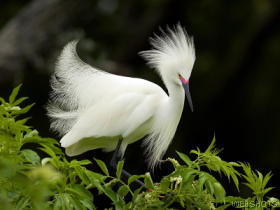
The Major Mitchell's Cockatoo, Lophocroa leadbeateri also known as Leadbeater's Cockatoo or Pink Cockatoo is a medium-sized cockatoo restricted to arid and semi-arid inland areas of Australia. It was usually placed in the genus Cacatua in recent times, but all available evidence suggests that placement of this species in a monotypic genus, Lophocroa is advocated (Brown & Toft, 1999).
With its soft-textured white and salmon-pink plumage and large, bright red and yellow crest, it is generally recognised as the most beautiful of all cockatoos. It is named in honour of Major Sir Thomas Mitchell, who wrote "Few birds more enliven the monotonous hues of the Australian forest than this beautiful species whose pink-coloured wings and flowing crest might have embellished the air of a more voluptuous region".



